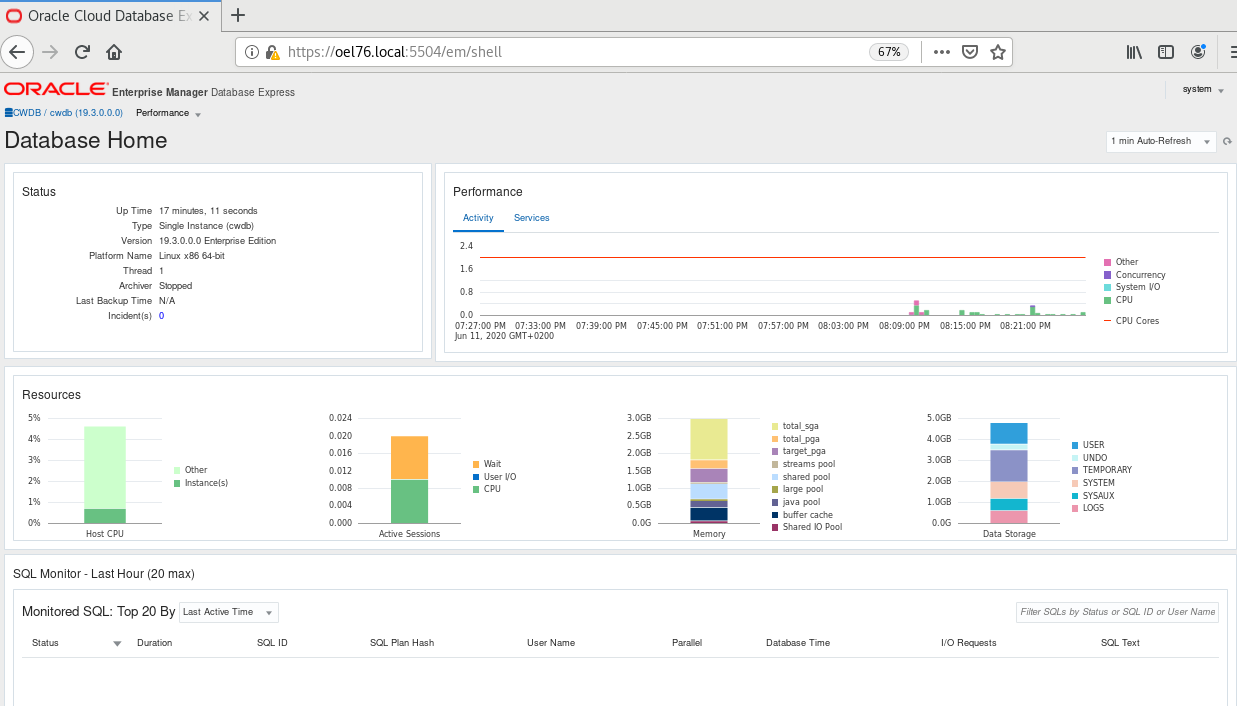
Then, change the last field for each to Y. For each database for which you want to automate shutdown and startup, first determine the instance identifier (SID) for that database, which is identified by the SID in the first field. In this example, the values Y and N specify whether you want the scripts to start up or shut down the database, respectively. On AIX, HP-UX, and Linux: # vi /etc/oratabĭatabase entries in the oratab file are displayed in the following format: SID:ORACLE_HOME: To open the file, use one of the following commands: To automate database startup and shutdown by using the dbstart and dbshut scripts: Run the following command to start Oracle Management Agent: $ $ORACLE_HOME/agent/bin/emctl start agentĢ.2.1 Automating Database Startup and Shutdown on Other Operating Systems If required, set the ORACLE_HOME environment variable to specify the appropriate Oracle home directory for Oracle Management Agent: Run the following command to stop Oracle Management Agent: $ $ORACLE_HOME/agent/bin/emctl stop agent If required, set the ORACLE_HOME environment variable to specify the appropriate Oracle home directory for the Oracle Management Agent: The output of this command is similar to the following: 94248 ? I 0:00.18 oracle_home/agent/bin/emagent. This command displays information about the Oracle Management Agent processes. Run the following command to determine the Oracle home directory for Oracle Management Agent: $ ps -ef | grep emagent
#Oracle start up how to
This section describes how to stop and start Oracle Management Agent. Typically, the Oracle Management Agent is installed in its own Oracle home directory. If you are using Oracle Enterprise Manager Grid Control to manage multiple Oracle products from a central location, then you must have an Oracle Management Agent installed on each host system. Run the following command to start the Database Control: $ $ORACLE_HOME/bin/emctl start dbconsoleĢ.1.4 Stopping and Starting Oracle Management Agent Set the ORACLE_SID and ORACLE_HOME environment variables to identify the SID and Oracle home directory for the database control that you want to start:īourne, Bash, or Korn shell: $ ORACLE_HOME= oracle_homeĬ shell: % setenv ORACLE_HOME oracle_home Starting Oracle Enterprise Manager Database Control Run the following command to stop the Database Control: $ $ORACLE_HOME/bin/emctl stop dbconsole To stop Oracle Enterprise Manager Database Control:ĭepending on the default shell, run the oraenv or coraenv script to set the environment for the database managed by the Database Control that you want to stop:Ĭoraenv script: % source /usr/local/bin/coraenv Stopping Oracle Enterprise Manager Database Control This section describes how to stop and start Oracle Enterprise Manager Database Control. For more information about Oracle (NYSE:ORCL), visit .2.1.3 Stopping and Starting Oracle Enterprise Manager Database Control Oracle offers a comprehensive and fully integrated stack of cloud applications and platform services. My Oracle Support provides customers with access to over a million knowledge articles and a vibrant support community of peers and Oracle experts. (C) Client sees ORA-3113 running SQL / PLSQL (B) ORA-3113 attempting to connect to the database using Oracle Net

(A) ORA-3113 when attempting to STARTUP OracleĪ1) Errors connecting as SYSDBA or on startup nomount
#Oracle start up full
To view full details, sign in with your My Oracle Support account.ĭon't have a My Oracle Support account? Click to get started! ORA-03113 on Unix - What Information to Collect This note is an updated version of archived These are all symptomatic of being disconnected from Oracle.


 0 kommentar(er)
0 kommentar(er)
